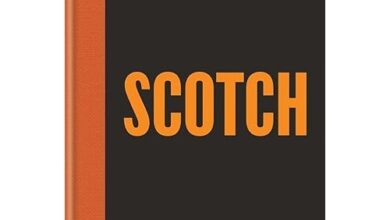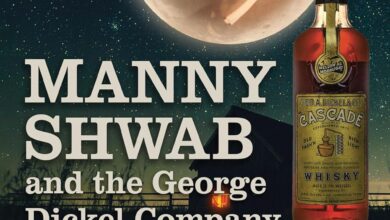Book Review: The Essential Scratch & Sniff Guide to Becoming A Whiskey Know-It-All
By Richard Thomas
In the vein of how childhood favorites like comic books have become adult mainstream, scratch and sniff has made a comeback and embraced booze. This explains how a book about hard liquor, like Richard Betts’s The Essential Scratch & Sniff Guide to Becoming A Whiskey Know-It-All, can have the sort of illustrated, children’s book style that would make it perfect for reading to my young son. After all, it (sort of) explains one of the things Daddy does for work.
The guide is only 20 pages long, made with thick, cardstock pages, and devotes more space on those pages to illustrations than to text. As one might expect from a description like that, the book isn’t about in-depth knowledge, so the “Know-It-All” part is hyperbola. Instead, Betts’s book is a primer, and a basic primer at that.
Within those limits, however, it’s a good work. Serious enthusiasts may find it little more than an amusing flip-through, but they should stop and recall their friends who had a hard time wrapping their heads around the difference between a pot still and a column still or what the differences between Scotch and bourbon are. This book was written and illustrated with an eye on the uninitiated, making it perfect as a get-them-into-whiskey gift. Even whiskey nerds might find the book worth having on the shelf, as something to trot out as a prop after hosting a home tasting.
One point the book surpasses other basic guides on, and there are hundreds of the things in print and online, is the novelty of the scratch and sniff pads. What better way to illustrate what corn contributes to bourbon or the difference between American white oak and Japanese mizunara oak than to actually be able to smell what they contribute to the spirit? That little touch brings certain concepts directly impacting on flavor and scent home.
The other special point is the whisk(e)y wheel folded up in the back, and this is what actor Edward Norton refers to when he said the book helped him identify how the whisky he wanted was Monkey Shoulder. Since even Jim Murray reportedly finds hundreds of new whiskeys to try every year, even serious whiskey fans can use such the wheel to help them answer the constant question “what to try next?”, whereas novices can use it to answer the question of “what to try first?”
Entertaining and eye-catching, Betts’s book offers a little something for diehards and a lot of something for newbies. Although less detailed, in many ways it is the most useful of the many guides to whiskey I have seen over the last couple of years.



